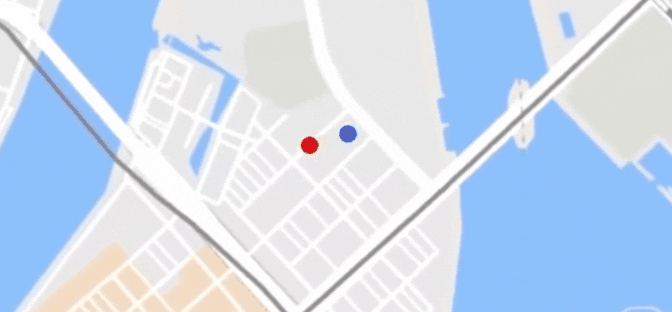Researchers at Yale University have developed a seriously confusing optical illusion that is proving our human nature has some bizarre quirks.
As part of the Neural Correlate Society's annual optical illusions contest, the Yale researchers developed what they call the "Who's Chasing Whom?" illusion.
Take a look at the video the team developed. What do you see the red and blue dot doing?
At first, it seems the red dot is chasing the blue dot over a map of Tokyo. After 30 seconds, everything changes and it seems like the blue dot is now chasing the red dot.
But what's really happening?
Turns out, the dots aren't chasing each other at all. The illusion is caused by the movement of the map. The researchers explained that by moving the map, our brain tricks our eyes into seeing the dots chase each other.
When it appears that the blue dot suddenly starts chasing the red, it is actually just a shift in direction of the map.
Still confused? It's easier to see when the map is taken away. Without Tokyo, you can see that the red dot is stationary and the blue dot is bouncing around haphazardly. Take a look.
The scientists said this is proof that as humans we intentionally give inanimate objects human acts so that we can better relate to them.
"Animate entities inhabit the world, and so it is their motion relative to the world (and not with respect to our retina) that determines whether we see chasing," the authors wrote about the study.
In other words, we see inanimate objects based on the way the rest of the environment is moving – in this case, the map.
"The primary goals of this study were to identify cues that trigger the perception of chasing, to quantify their influence, and to objectively evaluate the accuracy of this form of perception," the authors wrote in the Journal of Vision.
From this study, researchers said this illusion helps us further understand sensory perception and neurological diseases.
This article was originally published by Business Insider.
More from Business Insider:
